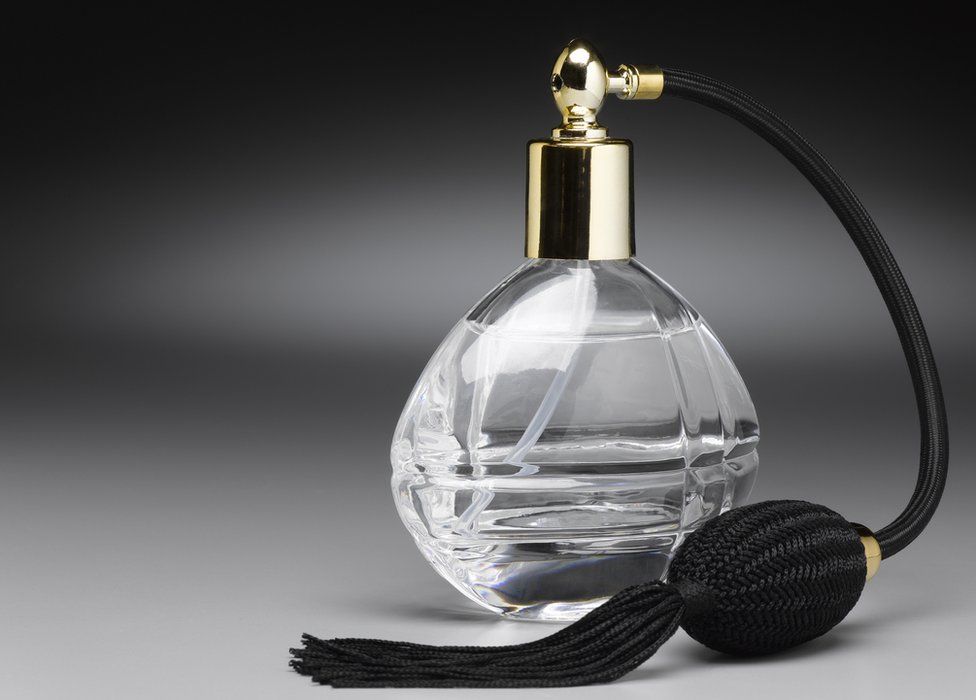Perfume traces could help to solve crimes
- Published

Detecting traces of perfume could help in the fight against crime, a study suggests.
Scientists have found that the chemical components of a fragrance can transfer from one person's clothing to another's - even if any contact is brief.
The scent's signature lingers for days, although it lessens over time.
The team says this is a proof-of-principle study, but suggests that perfumes have the potential to be used as trace evidence.
The researchers, writing in the journal Science and Justice, said that analysing fragrances could be a useful tool in cases where there has been close physical contact, such as sexual assaults.
Lead researcher Simona Gherghel, from University College London, said: "We thought there was a lot of potential with perfume because a lot of people use it. We know about 90% of women and 60% of men use perfume on a regular basis.
"While there is a lot of work in forensic science on transfers - for example, the transfer of fibres or the transfer of gun-shot residue - until now there has been no research on the transfer of perfumes."
Forensic reconstruction
Perfumes are concocted from many different chemical components, which in combination give an individual fragrance its distinctive smell.
The researchers, looking at a single male fragrance, found that some of these components were easily transferred from one piece of cotton to another.
When the two pieces of material were pressed together for just a minute, 15 out of 44 chemical components were detected on the second piece of fabric. If the contact time increased to 10 minutes, 18 components were measured.
The scientists also tracked how time affected the transfer of the volatile compounds.
They found that five minutes after an initial spray of fragrance, 24 out of 44 perfume components were detected on the second piece of fabric after it had been in contact for 10 minutes. Six hours after the perfume was applied, 12 components were transferred and seven days later, six volatile components were retained.
Dr Ruth Morgan, director of the UCL Centre for the Forensic Sciences, said: "It is a pilot study and a proof-of-concept study. We've shown that first, perfume does transfer, and second, we can identify when that transfer has happened.
"In the future there could well be situations where contact between two individuals is made and this is a way of discerning what kind of contact is made and when it was made."
However the team added that any evidence would have to be collected extremely quickly after an offence, which could limit its usefulness. They said it was also unlikely that fragrance would be used alone to solve a case.
Dr Morgan added: "It is not going to be a one-stop indicator. In most investigations we would be hopeful that there would be multiple lines of investigation. We wouldn't want it to just be DNA or just a fingerprint or just perfume. But in combination, with other forms off evidence, that's the way it builds up into a very compelling picture."
The team said more work now needs to be done to assess how perfumes transfer in more realistic forensic reconstructions.
Follow Rebecca on Twitter: @BBCMorelle
- Published14 January 2015
- Published28 March 2014
- Published12 December 2012
- Published9 January 2012